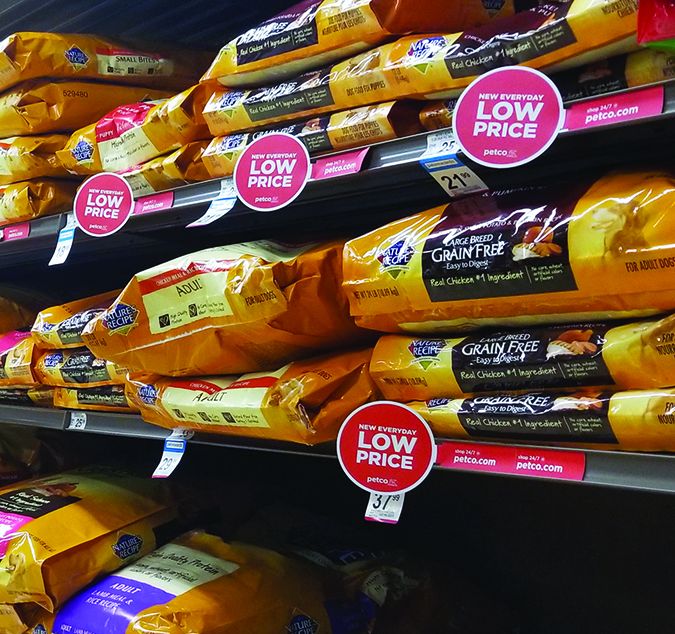You may have not noticed, but we’ve been using the words “foods” and “products” in the text above. We strongly encourage owners to rotate among at least three different products from different pet food companies throughout the year. And more may be better! Here’s why:
Most pet food companies use the same vitamin/mineral premix for all their dry dog foods – but the nutrient levels in the premix used by one company will undoubtedly be different than those in the premix used by other companies. If you feed only one food, or even several products from just one company, you are entrenching those nutrient levels in your dog’s body.
Many people (and even many veterinarians) believe that all foods that are labeled as “complete and balanced” contain approximately the same amounts and levels of nutrients. This presumes that pet food makers are all working to meet some sort of “recommended daily allowance (RDA)” of nutrients required by dogs – not so!
The RDA nutrient levels for humans were developed by the Food and Nutrition Board of the National Research Council/National Academy of Sciences. Vitamin, mineral, and macronutrient (fat, protein, carbohydrate) levels are expressed on our food packages as providing some percentage of the total amount of various nutrients that we need daily. But this isn’t how nutrient levels in pet foods are expressed.
AAFCO establishes the nutrient levels that legally constitute “complete and balanced” diets for our pets, and publishes the requirements for canine diets in a table – the “AAFCO Dog Food Nutrient Profiles.” AAFCO makes adjustments to the nutrient levels in the tables as continuing studies in animal nutrition are conducted.
But, unlike the human RDAs with target levels of nutrients, the Dog Food Nutrient Profiles consist only of minimum values for all the nutrients required by dogs and maximum values for just a few nutrients. As long as a food meets the minimum nutrient values expressed in the profiles, and doesn’t exceed the maximum values, it can be labeled as “complete and balanced.” Let’s say it another way: The foods on your pet store shelves may actually contain wildly varying levels of vitamins, minerals, and macronutrients, and yet all can call themselves “complete and balanced.”
This is why we have always advised owners not to settle on just one product and feed it to their dogs for months or (heaven forbid) years. It may develop that the particular product you have chosen – the one that seems to suit your dog so well – turns out to have copper levels that are way too high for your dog or selenium levels that are so low as to leave your dog dangerously deficient after years of eating nothing but that one diet. Your goal should be finding at least a few good dog foods from different brands to rotate among.







Every time I read about rotating my dogs diet, I cringe. She has so many allergies that it’s not even funny. Her main allergy is milk/dairy, her next one is beef, and she is allergic to flaxseed. It seems like every dog food manufacturer is adding flaxseed these days. The only food she can eat is ACANA Pork and Squash. I’m praying they don’t change the recipe. I wish someone would make a database of all the food manufacturers and the ingredients they use. Then I could weed out the ones that have her allergic ingredients.
That would be a great idea Barbara! I have spent the past few weeks doing my own research on puppy foods. We will be getting a new puppy soon and I want to give him the best food possible. Just when I think I have found one, I discover it is lacking in a certain ingredient. So I start my search all over again. I found that Chewy.com lists all of the ingredients for each food on their website and that is very helpful. I created my own database with the information that is important to me and then I can sort the ones that meet the criteria that I want. It is time consuming but hopefully will get me the best results for my new pup.
What kind of food i can give to my Labrador?
We’re can I i dopt a dog and what you recommend..
What cain of vitamins you recommend for my dog?
My dog don’t like dry food how can I give him